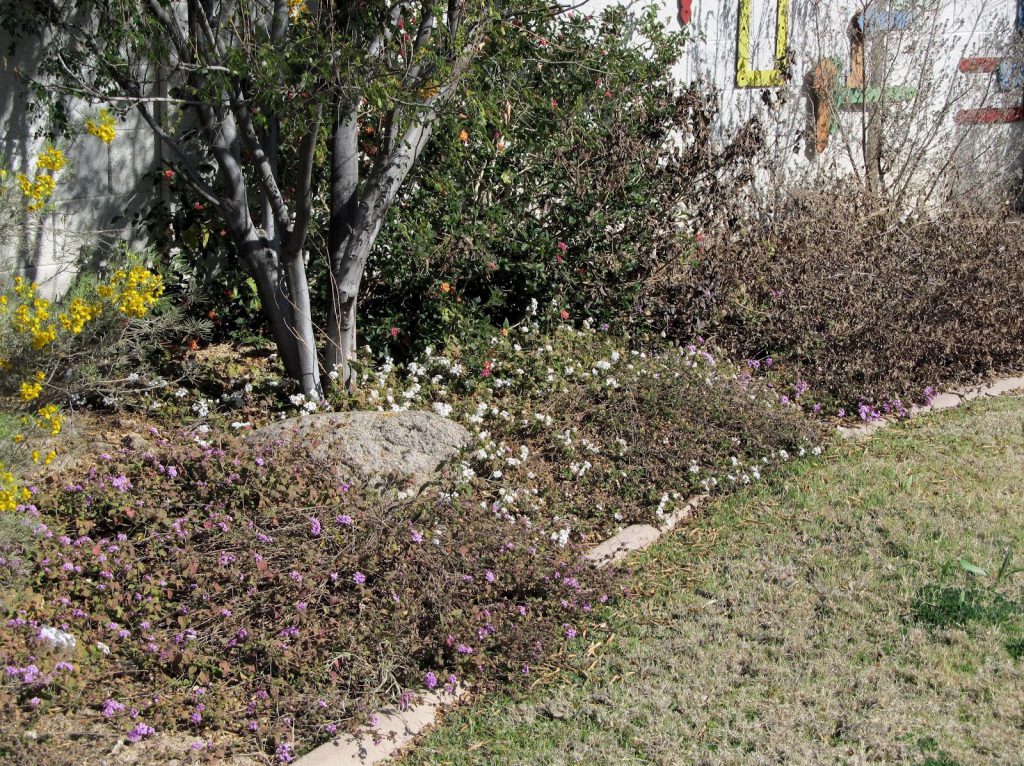It is only early March so winter still has a few weeks to go on the calendar, and in reality, several months in colder parts of the country. But, here in the desert southwest we are entering prime cleanup and replanting time. From now until late March is the time to get the yard ready for a springtime of satisfying retirement outdoor activities. By early June we enter summer heat hibernation mode when we want things to look pretty, even if we never leave the air conditioning to actually experience it. Silly, I know, but it is what we do.
So, the backyard is showing the ravages of what passes for winter in Scottsdale, Ariz. The lantanas have all turned brown. They must be cut back to within 3 or 4 inches of the soil so the new growth and flowers can be seen as they start to emerge in the next few weeks. At last count we had 25 lantanas waiting for the clippers. Amazingly, by late March these plants will be green with purple, yellow and white blooms.
The pyracanthas do well in the winter, producing little berries that turn from orange to red. Those bushes need some shaping and trimming as well. They have sharp stickers which always get me, no matter how thick the gloves or how careful I am. But, up against a white wall they are killers.
In the far corner is a large pepper tree in desperate need of shaping. It is looking a bit ragged and growing over the wall and into the neighbor's yard. With the top at least 30 feet high, I may have to hire a professional to properly trim and shape it.
Two other small trees growing just outside the dining room picture window had looked less than healthy for the past few years. I keep saying they should go, but year after year they stay. Finally, this week I have yanked them out by their rather hardy root systems and sent them to tree heaven.
The pots on the porch, Ramada, and various locations around the yard have winter blooms in them: petunias and pansies. Those plants will not survive the spring and summer temperatures so soon they must be replaced. Vincas and Zinnias do best in the heat and can be planted as early as the end of March.
The lawn is a major disaster area. During the winter we do not overseed with winter rye (the stuff you see on golf courses). It takes too much water and must be cut and trimmed every seven days to look its best. So, starting in November the Bermuda grass and all the assorted weeds turn brown until March when they begin to show signs of life.
For several years I have used various combinations of weed and feed products to eliminate the assorted weeds and clovers that are slowly crowding out the grasses. I have even tried pulling them all by hand. But, every spring there seem to be just as many as the year before. I swear I can hear them laughing at my attempts to control them. So, I have decided they win. I water and fertilize the grass, and hire someone to cut and trim it. The fact that the weeds benefit is something I have learned to accept.
As mentioned in earlier posts, I have cut way back on the number of pots I try to maintain through a summer of 100+ degrees. But, the view out the dining room and kitchen windows really benefits from colorful pots and plants all summer. Part of my satisfying retirement is having pretty views outside. For that to happen, the clock is ticking … and I need to get into the garden now.









